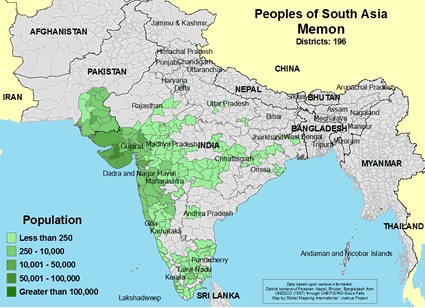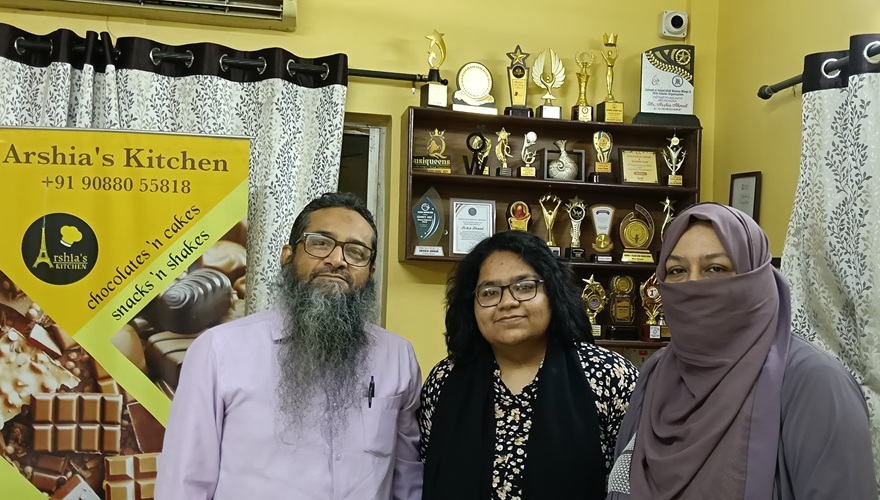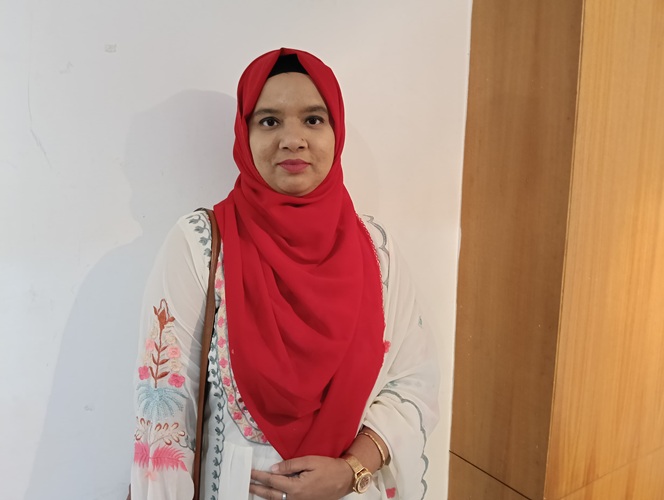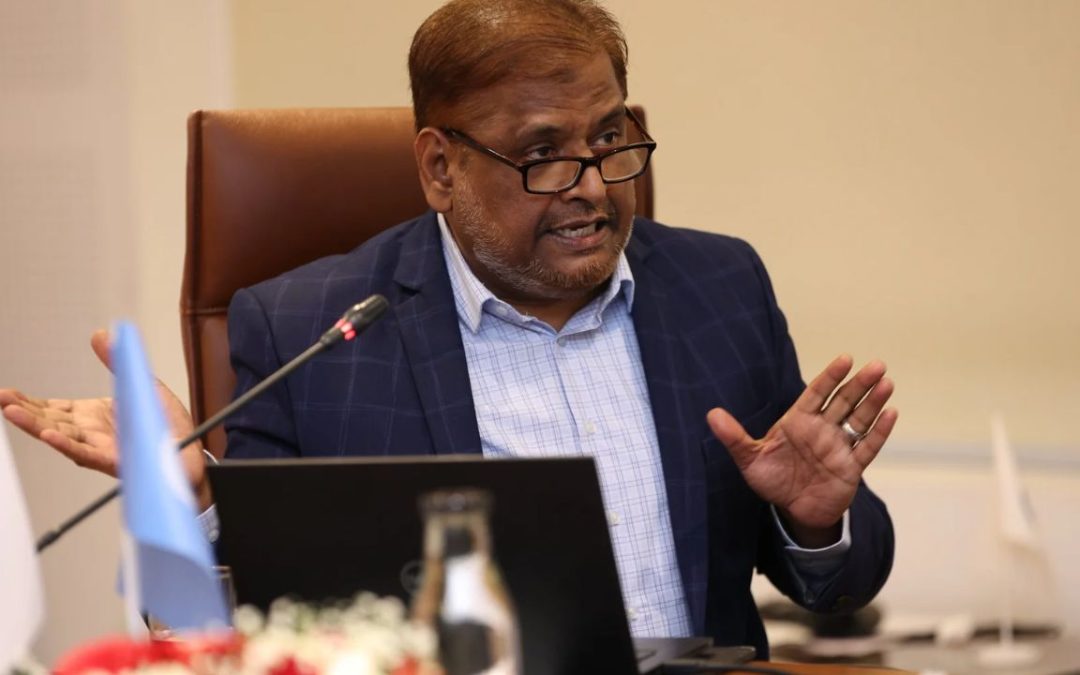Memons are an ethnic (linguistics) group that originated from lower Sindh near the Indus delta region. They are well respected Muslim Entrepreneurs, Philanthropist and Humanitarian in the Indian subcontinent and elsewhere. Memon are, generally, well known for being honest, hardworking and innovative that contributed greatly to their commercial success.
There are two unsubstantiated theories, according to Sayad Amir-ud-din Nuzhat (1873) – In early 15th century A.D near Nagar-Thatta, during the rule of Markab Khan of Samma dynasty (A.D. 1351-1521), several Hindu families accepted Islam from a well respected Sufi Sheikh who had given this tribe a new name Mu’amin and overtime the name tainted to Memon. If this theory is accepted, then the Memons were originally Hindu. Second theory is that according to Karimbaksh Khalid is that Certain soldiers of Arab tribe of Banu Tamim, of Qatif, near Ta’if, came to Sindh along with Muhammad bin Qasim, they were known as Maymenah, right-wingers in the army , and later this word was corrupted to Memons. If this theory is accepted, then the Memons were originally Arabs.
Soon after their entering into Islam, 15th century A.D., some Memons began to migrate toward the south west of Sindh approaching Coastal region of Arabian Sea into neighboring regions such as Kutch and Kathiawar for security and/or business reasons.
The history books have often described Memons as the “sailor businessmen of India” who had spread out from native Sindh and Gujarat taking residence and setting business in various Indian cities and faraway such as Asian and African continents
Beginning of 19th century, a mass settlement of Memons began throughout India, and a few decades later they also emigrated beyond its borders, chiefly to the countries of the Indian Ocean basin . By the end of the 19th century, rich communities of Memons were appearing in the ports of the Red Sea and the Persian Gulf, in Ceylon, Burma and East South Africa. By the end of 19th century, a sizeable Memon community was reported to have entrenched itself in East Asia . Memons have also established themselves in the Republic of Mauritius. The Cutchee Memons have even built in or around 1955 and manages till now one of the biggest and most beautiful Mosque in Mauritius : Jummah Masjid. Memons are Sunni Muslims and follow the Hanafi Islamic legal system (Fiqh).
Previously they used to speak Sindhi language, because of their migration to the neighboring regions Kutch and Khatiwar and their excessive use of the Gujrati language in their businesses, their language evolved into a dialect called Memoni , which is unwritten. Until 1970’s Memon businesses kept their books, records and business doucments in Gujrati. Toward the end of 20th century Memoni further underwent some changes in Pakistan and elsewhere due to Urdu language as Urdu has been widely accepted and used as a Muslim language by the Muslims in the Indian subcontinent and eventually English is being replaced by Gujarati.
August 14, 1947 A new nation Pakistan was created and gain independence from British 9-10 November 1947′ Occupation of Junagadh State and the population of Kutiyana was attacked by the Sikh Regiment Novemebr 16- 30 1947 Migration to Pakistan.
Prior to the Partition of India most Memons lived in Kutch and Khatiwar. Those who settled in Kutch were called Kutchi Memon / Cutchi, and those who settled in Kathiawar were called Kathiawadi Memons and those who remained in Sindh were called Sindhi Memon. Memons further distinguished themselves to a town where their forefathers last settled in India. Example Banatva Memonn Kutiyana Memon. Many Memons also settled in major Indian cities such as Ahmedabad, Surat, Mumbai, Kolkata, Cochin, Madras, Colombo etc.
After Partition of India Many later settled in Pakistan. Today, they are scattered throughout India and Pakistan, with significant communities in the United Kingdom, Canada, USA, Bangladesh, Sri Lanka, UAE, and South Africa and Burma. There are no definite population figure and it is estimated that, it is over one million (2005) for Khatiwari Memon alone. This are no estimate available for Kutchi and Sindhi Memons.
Most Memons are religious and family oriented, and their lives are deeply rooted in Islamic tradition. Almost all marriages are still arranged by parents, in the past, bride and groom did not even meet until night of wedding. Now, many family permit meeting of couple with supervised courtship before and after the engagement. The degree to which the children are consulted depends on the family, a matchmaker, an elderly lady, sometimes is employed for a suitable search. Womenfolk generally play important role in selection and negotiation of wedding arrangements. The negotiation generally includes whether the couple will stay with groom’s parent or have their own accommodation. How the weeding will be financed who will pay what. Pre-partition, a groom must give clothing, jewellery to bride but nowadays, the situation is reversed. Nowadays contrary to Islamic tradition, sometimes bride family have to undergo outrage expenditure to finance the wedding, some cases this amount to a dowery. The pre-wedding ceremonies include simple engagement party, generally participated by womenfolk only. A simple marriage religious ceremony, without any procession, generally take place at a prominent mosque in the city only men participate, consent of bride is legally required at the ceremony which generally obtained by her legal representative prior to the ceremony.. In the past the weddings were simple, that may include a wedding procession called Milad , the singing of nasheeds without any musical instruments. Nowadays the weddings often elaborate sometimes consists of a dozen of different gatherings with unnecessary and outrage expense.
Man having more than one wife,divorce and marriage of younger girl to older man are rare. Marriage between the close relative is discourage and forced and child marriages are unheard of. Memons rarely married outside their subgroup (jamaat).






0 Comments